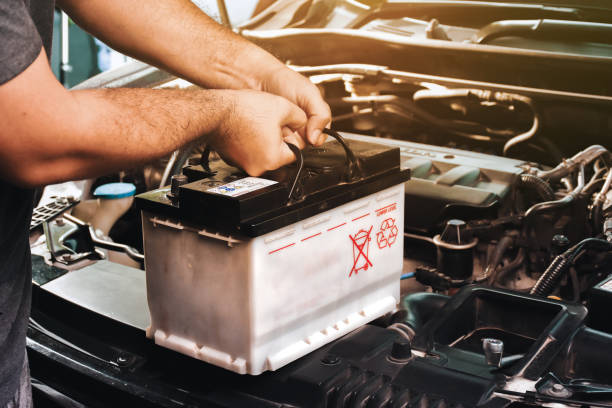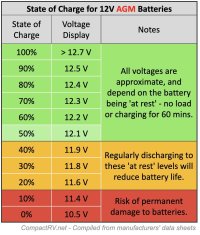The 2 batteries are wired in parallel so are treated as 1 big battery of 12v and 150 amp hours.
The vehicle alternator and the EHU mains battery charger are connected to the battery under the passenger seat. The Control Panel will show the voltage of the combined battery and the charging voltage from the alternator when the engine is running or the charging voltage from the EHU mains charger if plugged into EHU mains.
The only problem is that there is a 50/75 or 100amp cube fuse ( depends on vehicle year ) fitted to the +tve pole of the wardrobe battery. If that should fail the wardrobe battery is cut off and so you are only running on 1 battery. The Control Panel will not show anything different but the voltage will drop quicker than usual when running fridge or parking Heater.
The only way round this as
@yossarian said is to measure the voltage of the wardrobe battery seperately, but its not really a big problem if you don't. Just remember if the Control Panel volts drop quicker than usual check the Cube Fuse.
 www.varta-automotive.com
www.varta-automotive.com
















